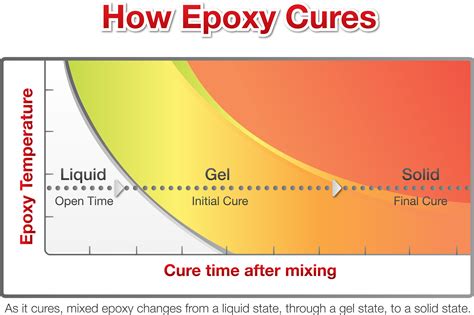Epoxy Cure Time: From Liquid to Solid
Epoxy resin is a remarkable material prized for its strength, durability, and versatility. From crafting stunning jewelry to reinforcing industrial structures, epoxy's applications are vast. But before enjoying the finished product, understanding epoxy cure time is crucial for achieving optimal results. This comprehensive guide explores everything you need to know about how long it takes for epoxy to cure, influencing factors, and troubleshooting common issues.
What is Epoxy Cure Time?
Epoxy cure time refers to the period it takes for the liquid epoxy resin and hardener mixture to fully transition into a solid, hardened state. This isn't a simple "set" time, but a process involving several stages:
- Initial Set: This is the point where the mixture begins to thicken and lose its fluidity. You'll notice it becomes less pourable.
- Gel Time: The epoxy reaches a gel-like consistency, no longer flowing easily. This is a crucial point for handling and manipulating the epoxy.
- Cure Time: This represents the complete hardening process. The epoxy reaches its full strength and chemical stability. This is the time required for the epoxy to achieve its designed properties, including hardness, chemical resistance, and tensile strength.
Factors Influencing Epoxy Cure Time
Several factors significantly influence the cure time of epoxy resin:
-
Temperature: Lower temperatures slow down the curing process, while higher temperatures accelerate it. Ideal curing temperatures are usually specified by the manufacturer on the product's label. Extreme temperatures can negatively affect the final product's quality.
-
Humidity: High humidity can hinder proper curing and lead to a sticky or tacky finish. Low humidity can sometimes affect cure time as well, though less dramatically than high humidity. Controlling the environment is key.
-
Resin Ratio: Precisely following the manufacturer's recommended resin-to-hardener ratio is paramount. An incorrect ratio can lead to incomplete curing, a weak final product, or even a failure to cure altogether.
-
Type of Epoxy: Different epoxy resins have varying cure times. Some are designed for rapid curing, while others require longer periods. Check the product specifications for your chosen epoxy.
-
Pot Life: This refers to the working time you have before the epoxy starts to thicken. Once the pot life is over, the epoxy will become increasingly difficult to work with.
How Long Does Epoxy Take to Cure?
There's no single answer to this question. Cure time can range from a few minutes to several days, depending on the factors listed above. Always refer to the manufacturer's instructions on the epoxy product you are using. They will typically specify the cure time under ideal conditions (temperature and humidity).
Typical Cure Times (Approximate):
- Fast-Curing Epoxy: May fully cure within a few hours to a day.
- Standard Epoxy: Typically cures within 24 to 72 hours.
- Slow-Curing Epoxy: Can take several days or even weeks to reach full cure.
What Happens if Epoxy Doesn't Cure Properly?
Improperly cured epoxy can result in several problems:
- Stickiness or Tackiness: This often indicates incomplete curing, usually due to improper mixing, temperature, or humidity.
- Brittleness: This can be a sign of too fast a cure or overheating during the process.
- Weakness: Incorrect resin ratios or inadequate cure time can lead to a weak final product that is easily damaged.
Troubleshooting Epoxy Curing Problems
If you encounter curing issues, consider the following:
- Verify the mixing ratio: Ensure you've meticulously followed the manufacturer's instructions for mixing the resin and hardener.
- Check the temperature: Make sure the curing environment is within the manufacturer's recommended temperature range.
- Control humidity: If possible, work in a low-humidity environment.
- Re-read the instructions: Carefully review the instructions for your specific epoxy product for troubleshooting tips.
Conclusion
Understanding epoxy cure time is vital for any project involving this versatile material. By paying close attention to the factors that influence cure time and by following the manufacturer's instructions carefully, you can achieve a strong, durable, and long-lasting final product. Remember, patience and attention to detail are key to success when working with epoxy resin.

